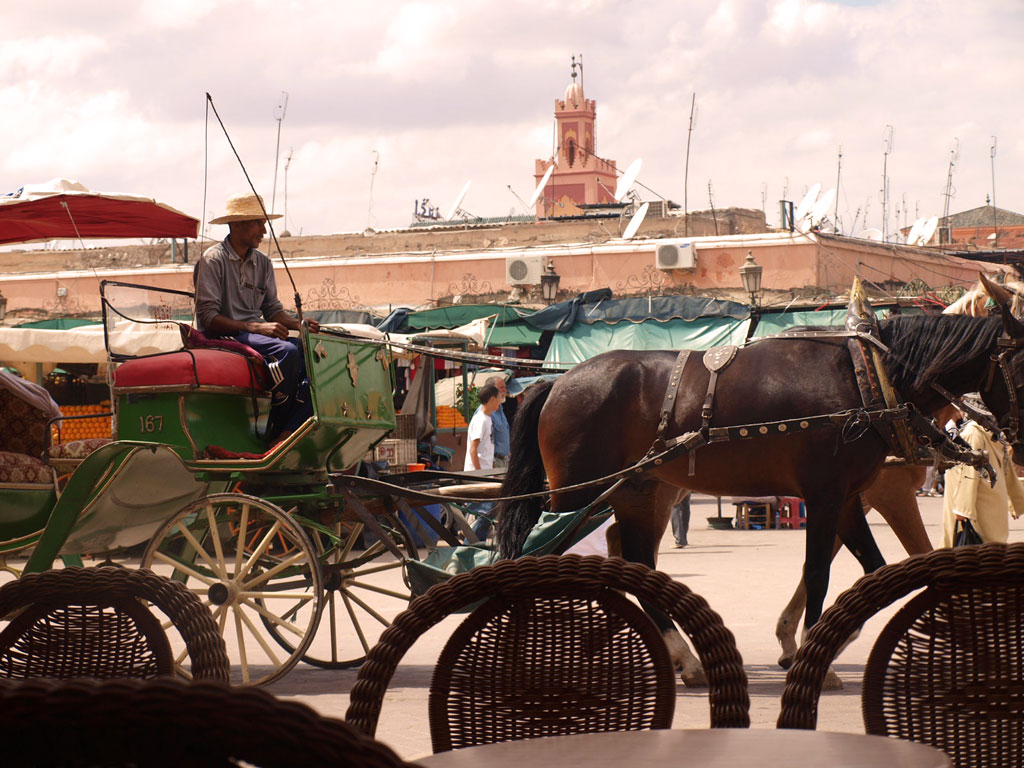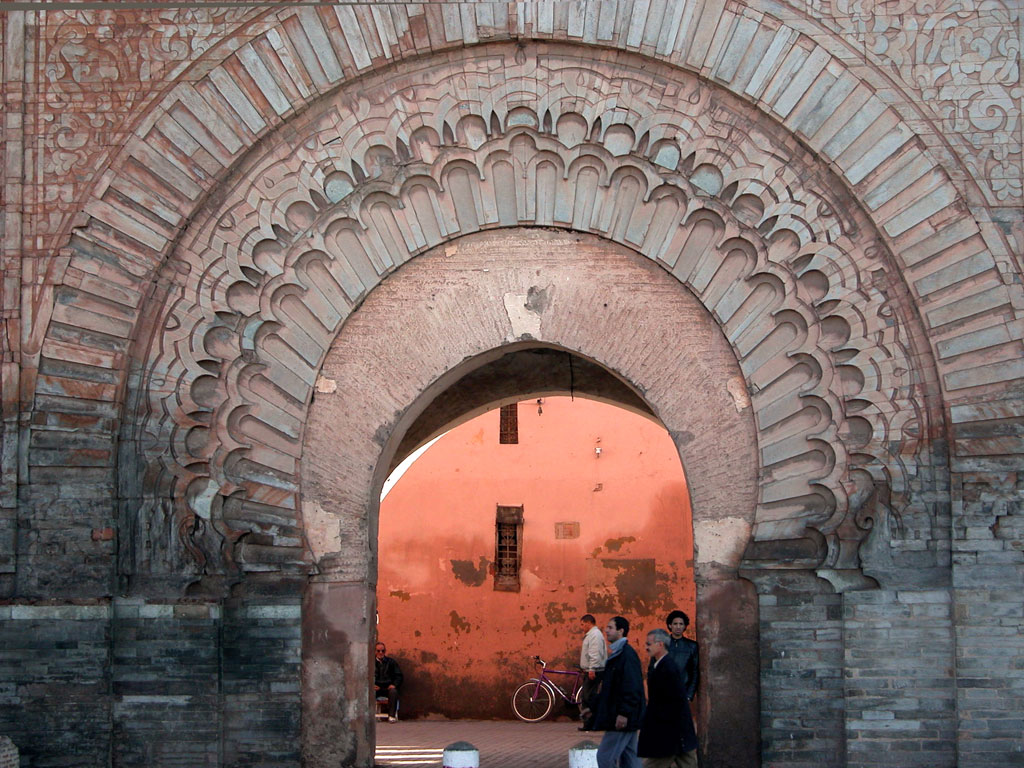Medina of Marrakesh is enclosed by 20 kilometres of ramparts with 19 gates. The original rampart was erected by the Almoravids in the 12th century, to protect the city from the attacks made by the Berbers.
The ramparts, made entirely of clay with wooden posts crossing through them, acquire a spectacular beauty when when the evening sun bathes them in fiery colours.
Many of the carriages parked in the town square of Jemaa el Fna, or near Bab Nkob, offer you a complete tour, lasting two hours, and twice that length if you ask the driver to make three or four stops, so you can walk through some of the gates to visit places of interest: Bab Agnaou, to visit the Kasbah, Bab Debbagh, to watch the tanners at work, or Bab Aghmat, through which the troops of Abd El Moumen took the city in 1147.
An ideal stroll round the ramparts, including a few stops, will take you four hours. The route is described below:
You start your trip by catching a carriage waiting in the queue at Bab Nkob, the gate through which Mohamed V Avenue joins with the Koutoubia and the Medina, and you are taken along the El Yarmouk Boulevard, exiting through Bab El Jdid. Then the tour starts, travelling in an anticlockwise direction.
The path runs next to the wall that lies between the gardens of La Mamounia and the walls of the cemetery of Sidi Soheili, one of the seven saints of Marrakech, taking you to Bab er Rob. We get off the carriage and, 30 metres away, we find we have arrived at Bab Agnaou, the gate that marks the entrance to the area of Kasbah, the ancient Almohad fortress.
Bab Agnaou, one of the architectural marvels of the Almohad period (12th century) leads you to the Saadian tombs, 50 metres away. We get back into the carriage to visit Bab Ksiba and we enter into the old town through Bab Ighli. We cross the Gran Mechouar, which passes through the Royal Palace, and at the other end, we find ourselves in front of Bab El Makhzen. We exit the palace by going through Bab Ahmar, which takes us out of the city again, leading us to the Zaouia of another saint of Marrakech, Sidi Youssef Ben Alí, the protector against leprosy, next to Bab Aghmat.
The carriage takes us along the Route des Remparts, skirting the walls on the east and heading towards Bab Aylen. When we reach the gate, we find the mosque of Cadi Ayyad Ben Moussa. It is also through this gate that, in 1129, the Almohads tried in vain to take over Marrakech. Further on, you reach the first of the two gates that lead to the tanners’ area: Bab ed Debbagh and Bab Kechiche. As we approach the river, we begin to realise the air is full of the characteristic smells of the products used in the tanneries.
Continuing with our trip, we reach the impressive Bab El Khemis, the Thursday Gate, which is flanked by two imposing bastions. The old road to Fez used to start from here and it is also the entrance to whoever wishes to visit the Ben Youssef Madrasa.
At Bab el Khemis, the driver takes the road to the Palmeraie (palm tree grove) in the direction of the gate of Bab Doukhala, built in the 12th century by the Almoravids. 400 hundred metres away is Bab Er Raha; the final stop is at Bab Nkob, the starting point of the tour.



